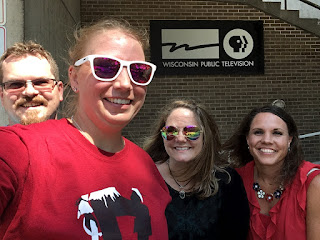Team Building With Team Trivia
Every once in a while in our building we offer choice sessions as rewards for students. One of my favorites that I like to facilitate is a team trivia session to tap into student knowledge as well as to support team building. This trivia was inspired by how America's Pub Quiz Trivia is facilitated at local restaurants in the area. I created an abbreviated version to support sessions from 30 to 45 minutes.
Team trivia is facilitated in the same way that pub trivia is facilitated in which teams choose how many points each question is worth. In the first round the points you can choose per question are 5, 3, or 1. In the second round the points jump up to 6, 4, or 2 points. Teams can only earn points on these questions each round, they cannot lose points by guessing. Each point total can only be used ONCE per round. I am fairly flexible on how much time I allow students to answer the questions, but I would recommend being consistent and using a timer for each question and providing 1 min and 30 second warnings.
After being asked the question, each team turns in their response on a small slip of paper (see p.2) containing: their team number, answer, and amount of points that question is worth for their team. The trivia host checks for accuracy and awards points on the point total board (spreadsheet). Once three rounds are complete there is a final round question (which is usually more challenging in nature) where teams can wager up to 15 points that they could earn (or lose) whether or not their question is correct. Prior to this final round, the trivia host usually shares the standings and makes sure the point totals are accurate. Teams keep track of their points on the half-sheet (see p.1) that is also shared.

You could use content themed questions or you can borrow those from trivia games like I do. I like to use the Logo Game or Trivial Pursuit Junior and often select (age appropriate) questions as I go. If I had more time I would identify themes and find/create questions to support them. There are also times that I have changed the rules mid-game and have incorporated speed rounds with showing dry erase boards, etc.

Have fun with it! Happy Trivia!
Reflection Questions:
Team trivia is facilitated in the same way that pub trivia is facilitated in which teams choose how many points each question is worth. In the first round the points you can choose per question are 5, 3, or 1. In the second round the points jump up to 6, 4, or 2 points. Teams can only earn points on these questions each round, they cannot lose points by guessing. Each point total can only be used ONCE per round. I am fairly flexible on how much time I allow students to answer the questions, but I would recommend being consistent and using a timer for each question and providing 1 min and 30 second warnings.
After being asked the question, each team turns in their response on a small slip of paper (see p.2) containing: their team number, answer, and amount of points that question is worth for their team. The trivia host checks for accuracy and awards points on the point total board (spreadsheet). Once three rounds are complete there is a final round question (which is usually more challenging in nature) where teams can wager up to 15 points that they could earn (or lose) whether or not their question is correct. Prior to this final round, the trivia host usually shares the standings and makes sure the point totals are accurate. Teams keep track of their points on the half-sheet (see p.1) that is also shared.

You could use content themed questions or you can borrow those from trivia games like I do. I like to use the Logo Game or Trivial Pursuit Junior and often select (age appropriate) questions as I go. If I had more time I would identify themes and find/create questions to support them. There are also times that I have changed the rules mid-game and have incorporated speed rounds with showing dry erase boards, etc.

Have fun with it! Happy Trivia!
Reflection Questions:
- How can you use this in your classroom or with staff?
- What themes/content could it support?
- How could you involve students in the creation of the questions or facilitation of the activity?




Comments
Post a Comment